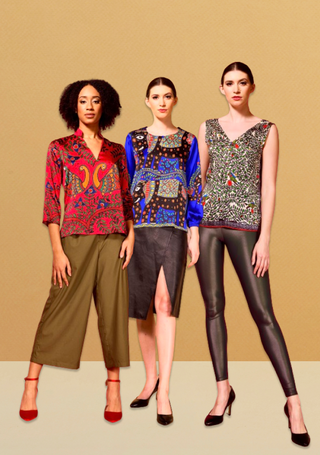Fashion connoisseurs are shifting away from the quantity-focused world of fast fashion. Instead, environmentally-conscious buyers are seeking a more sustainable, eco-friendly clothing source.
And thank goodness for that.
Because the United Nations Economic Commission for Europe released a recent report that showed textiles accounted for 10% of the world’s annual carbon emissions. This figure exceeded the emissions from all maritime shipping and international flights combined.
Some manufacturers have observed this worrying trend and have developed sustainable clothing to combat fast fashion. Conscious shoppers should learn the merits of supporting these manufacturers.
Here’s how eco-friendly fashion benefits the planet.
An Eco-Friendly Fashion History
Before the 1940s, most clothing manufacturers used natural fibers in their products. However, U.S. WWII rationing ushered in a wave of textiles built from synthetic fibers. These fibers proved more durable, water-resistant, and less susceptible to insects than their natural-based counterparts. Nineteen-fifties Americans noticed these advantages and used the decade’s wealth to purchase synthetic-based clothing at high rates.
By the 1970s, however, green-loving observers started to note problems with this consumption. Hippies of the era sought locally-sourced, pesticide-free clothing to reduce their environmental impact. They also reused their garments to combat the mass production hegemony.
The 1980s turned the hippie counterculture movement into a global institution, the World Fair Trade Organization (WTFO). Part of the WTFO’s mission was to improve the environment by reducing consumer waste.
Organizers formed Global Organic Textile Standards (GOTS) in 2002. This metric gave clothing made from primarily organic fiber its stamp of approval. International regulators recognized GOTS, ensuring reliable global guidelines.
Manufacturers post 2002 have used the GOTS branding to promote slow fashion. Designers like Naytra Couture make natural, timeless clothing that survives the stress of long-term use. Thanks to this progress, modern shoppers can reduce fast fashion’s ecological damage while maintaining a bold look.
Biodegradable Fashion
Unfortunately, fast fashion’s environmental footprint doesn’t end with carbon emissions. Millions of tons of clothing fill landfills each year. To avoid an ecological disaster stemming from this waste, people should seek biodegradable clothing.
Natural fibers, like cotton, wool, and silk, meet this criterion. And materials like silk can make an excellent compost base that infuses your plants with rich ingredients.
Some well-meaning people have decided on a half-measure between nature and convenience by adopting mixed fibers. However, synthetic chemicals preserve the garment so much that even a small percentage of polyester in a cotton skirt makes it take far longer to decompose. If sustainability is your goal, 100% natural is your only real option.
Washing Machine Friendly
Each time you put clothes through the wash, bits of fabric come off and travel down the drain. With cotton or silk clothing, this process is no big deal. But the accumulation of plastic particles can do significant environmental damage.
Most synthetic bits the washing machine removes are too small for waste processing plants to filter. So, these particles travel to the plant’s treated waste dump, often the ocean. Here, small marine life consumes the plastic, eventually carrying it up the food chain to humans.
Doorway to Communicate Your Ecological Values
When you choose a talented eco-friendly fashion designer, you invite commentary from those around you. This commentary opens a gate to share your values and highlights how your decisions help the environment. Your positive influence on others can translate into a green rejuvenation wave.
Promotes an Eco Mindset
Engaging in eco-friendly fashion positively influences the wearer’s mindset. Committed environmentally-conscious shoppers keep their wardrobes for far longer than the uninformed. This practice creates a stable fashion sense that outlasts fleeting trends. But practitioners must ensure their style choices are timeless to avoid an outdated feel.
When their clothes stretch out of shape or unthread, the conscious shopper recycles them into a new product. This process, called upcycling, can produce a gorgeous new thing that highlights your creativity. For those short on ideas, this article shows how to recycle clothing into pillows.
Naytra Couture’s clothing is 100% organic mulberry silk. And we collaborate with local Indian artisans to provide a timeless fashion that invites discussion. So, buyers get a low-environmental-impact style statement that lasts for years. Shop our collection to start your eco-friendly fashion journey.
Key Takeaways
- Eco-friendly fashion has grown from an unorganized counter-protest to a global standard.
- Natural fibers are biodegradable, ensuring a limited time in landfills.
- Washing machines drain plastics from synthetic fibers into the ocean.
- High-quality, sustainable designs invite discussion about your values.
- Conscious shopping encourages environmentally-proactive habits, such as upcycling.


